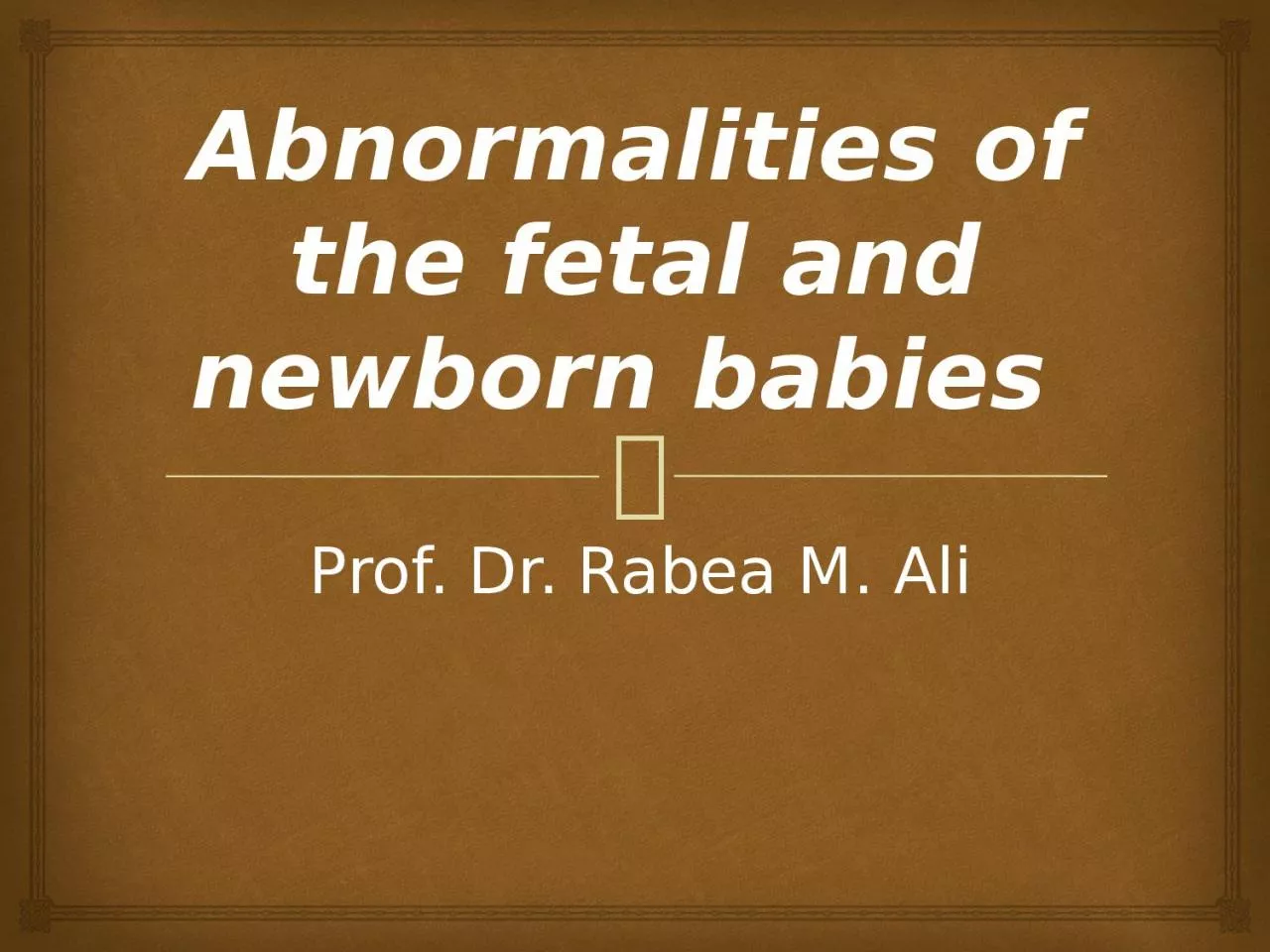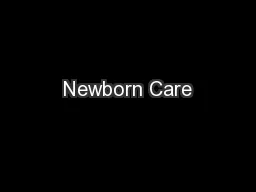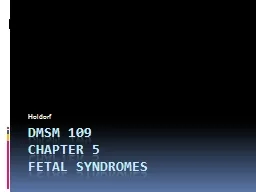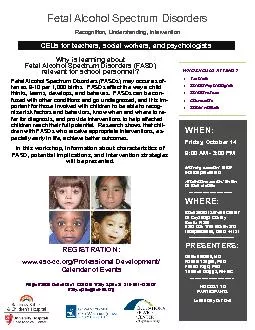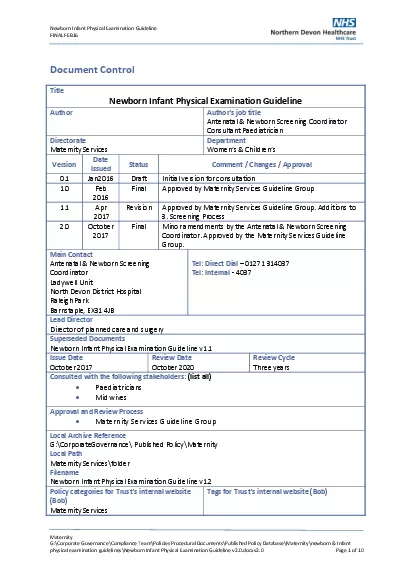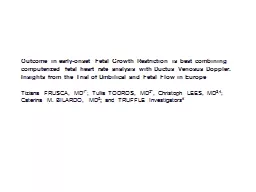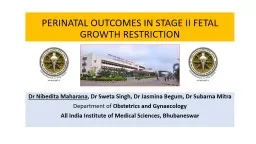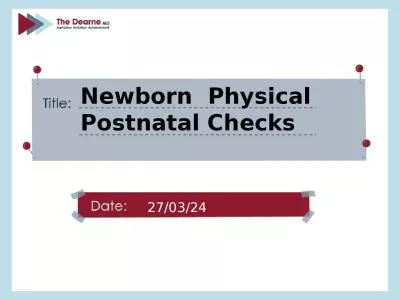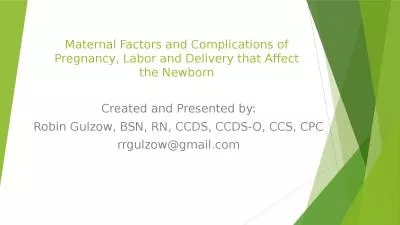PPT-Abnormalities of the fetal and newborn babies
Author : grace3 | Published Date : 2022-06-07
Prof Dr Rabea M Ali Definitions A congenital disorder is a medical condition that is present at or before birth can be acquired during the fetal stage
Presentation Embed Code
Download Presentation
Download Presentation The PPT/PDF document "Abnormalities of the fetal and newborn b..." is the property of its rightful owner. Permission is granted to download and print the materials on this website for personal, non-commercial use only, and to display it on your personal computer provided you do not modify the materials and that you retain all copyright notices contained in the materials. By downloading content from our website, you accept the terms of this agreement.
Abnormalities of the fetal and newborn babies: Transcript
Download Rules Of Document
"Abnormalities of the fetal and newborn babies"The content belongs to its owner. You may download and print it for personal use, without modification, and keep all copyright notices. By downloading, you agree to these terms.
Related Documents

